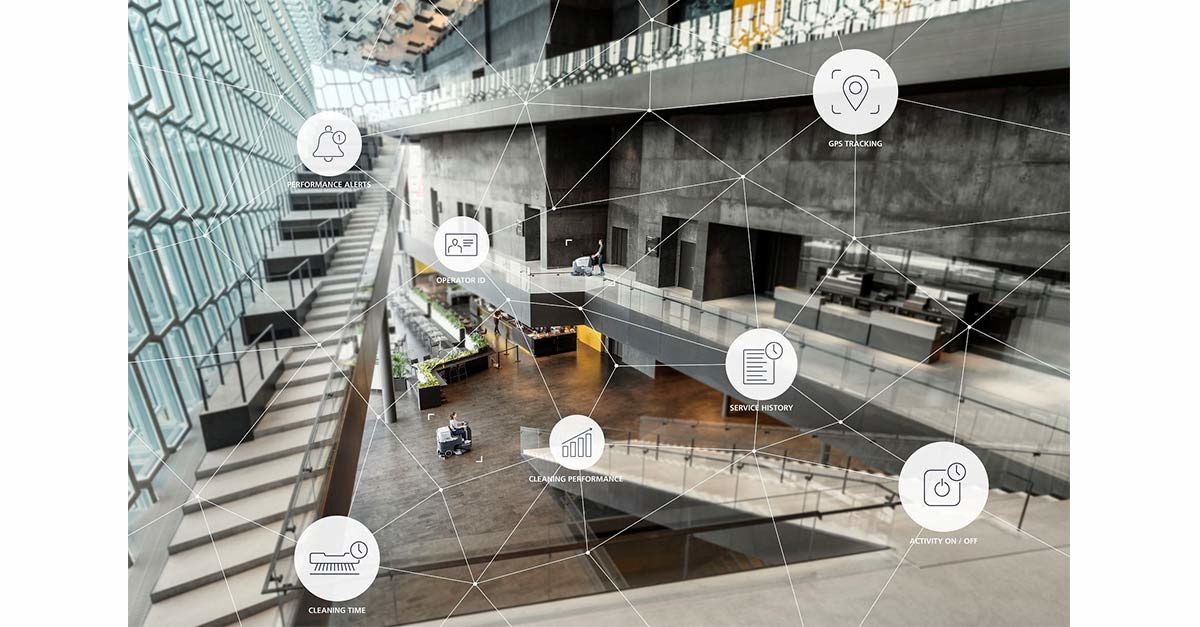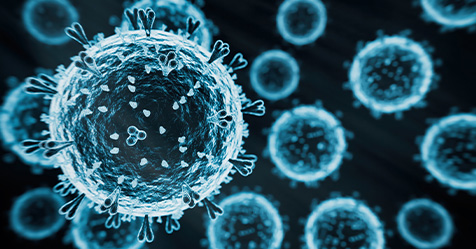As the Internet of Things (IoT) comes to life to power smart buildings, the professional cleaning industry has begun to integrate IoT applications into its cleaning solutions, enabling “connected cleaning.” Right now, the IoT enables technologies like sensors and software to talk to a variety of connected devices. Increased connectivity amongst the devices and systems we use has allowed lighting and heating systems to automatically turn on and off in buildings while water pipelines are able to tell utility companies where a leak is originating.
With the birth of connected cleaning, we will, over the coming years, see various pieces of cleaning equipment that communicate with each other and with other systems in a building, adapt cleaning schedules to the weather, send performance reports in real time, and notify us when—or even before—maintenance is needed.
While connected cleaning is still in its early stages, companies are eager to embrace the technology and begin implementing it in the next few years to solve various challenges they face. In the recent Global Trend Study conducted by Nilfisk, one-third of the participants named “connected cleaning” as one of the dominating industry trends for 2018. As connected cleaning begins to sweep through the industry, you can expect to see three main phases of its evolution, from simple monitoring that generates data, to cleaning as a service and, ultimately, autonomous cleaning through integrated systems.
Connected Cleaning Today: Intelligent Fleet Management
Until a few years ago, if you wanted information on how your cleaning staff and the machines they used were performing, you had to get that information manually—or each machine, each team, at each location. Today that has changed.
With connectivity, there is far more visibility and control over cleaning assets. Giving you access to every machine, connectivity allows you to monitor your cleaning fleet and get accurate data on whether the machine is operating, who is operating it, the location of each machine, and the amount of time each machine has been used.
While all this data can be used to optimize your cleaning program, data in and of itself is not enough. The industry needs to demonstrate to customers how all that data can be used to create value and deliver better business results.
Connected Cleaning Tomorrow: From Units to Uptime
Cleaning services are in many cases viewed as a necessary cost. IoT can change that. By helping customers build a data-based relationship with the end user, we can facilitate a shift—where these services are acknowledged as a value provider.
Connectivity will allow you to monitor machines remotely. Based on the data sent to a hub, the equipment supplier will be able to track performance and spot any changes. If, for example, an autonomous machine suddenly stops working, the supplier will be able to restart it remotely without inconveniencing the end customer.
Data from the machines will also allow for predictive maintenance. The supplier will be able to check the condition of the equipment, anticipate failures, and predict which parts need changing. For example, the data will tell the supplier that a battery in a machine needs to be replaced within 14 days. Once again, this can be done without involving the end customer and without any downtime.
The combination of remote monitoring and predictive maintenance will change the cleaning industry’s current business models. With total cost of ownership emerging as a key differentiator, customers will be buying cleaning uptime rather than a fixed number of units.
The Future of Autonomous Cleaning Through Integrated System
Over the next decade, we will move toward a digital ecosystem driven by a mega-network of connected devices, systems, and cognitive computing. Smart buildings are the most visible example of this network where systems for lighting, heating, and ventilation use sensors to adjust their settings and performance depending on the number of users in the building. In the future, connected cleaning will be one of these systems, along with security systems and mobility systems like elevators and escalators.
Buildings will continue to become smarter and facility management will follow suit by becoming more advanced. The various systems will work together, combine their data, and use the data to make our workplaces and our homes more efficient and comfortable. The systems will anticipate our needs by scanning the environment around us, exchanging data, and sending instructions on the activities that need to be performed. It will also be possible to access these systems remotely.
For the cleaning industry, these developments will pave the way for an autonomous and seamless cleaning operation—with machines that know when, where, and how much to clean. They will gather and combine data from various sensor points in the building—such as electrical systems and weather applications—to predict and adjust the level and frequency of cleaning. The benefits will be more efficient operations, lower cost,s and a more personalized environment.
There is no doubt that connected cleaning, driven by the IoT, will be a game changer for the cleaning industry and customers alike.



